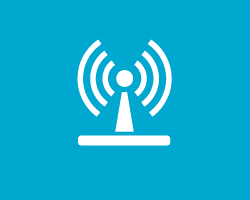 Like most organizations, your lab is likely thinking about ways to reduce costs and maximize profits.
Like most organizations, your lab is likely thinking about ways to reduce costs and maximize profits.
If so, keep in mind that no matter your area of research, sample volume or locations, remote monitoring services can make a difference in yearly maintenance expenditures.
Make the Most out of Your People and Instrumentation
Unless you’re running samples, you’re losing revenue. Even if you’re not charging your customers for sample runs, your operating costs rise like a rocket when your instruments are down. Therefore, instrument downtime is a significant concern for most labs.
After polling SCIEX users, we found that labs that used the SCIEX remote monitoring service found that up to 50 percent of their instrument issues could be resolved remotely.
These users spent much less time waiting for a service engineer to arrive on site, diagnose and repair the problem.
SCIEX LC-MS systems already have exceptional uptime, but reclaiming a day of productivity means your instruments are running samples that would otherwise be waiting.
Based on a number of samples run per day and cost or revenue per sample, even a 1% increase in uptime could save you thousands of dollars!
Mass Spec Remote Monitoring Services Enable Your Lab to:
- Improve Asset Management: View and analyze instrument utilization, uptime, and sample throughput, anytime, anywhere.
- Maximize Your Return on Investment: Don’t wait for instrument failure to act. Quickly resolve issues before they snowball into big problems.
- Enhance your competitive advantage: Better sustained operations keep your lab productive and competitive.
How often have you had to postpone operations while waiting for a service call?
Perhaps you are familiar with the advantages of remote monitoring services but have difficulty convincing your management of their value.
Remember, remote monitoring services simply cannot be beaten when it comes to obtaining reports on instrument utilization, performance, uptime, and sample throughput.
With remote monitoring, your team can monitor the current health your system efficiently. That means you are already in the know when things are amiss.
When an instrument requires an onsite fix, an engineer spends less time diagnosing the problem and more time actually fixing the problem, which can save your lab hours or days of downtime.
Clearly, remote monitoring enhances your organization’s competitive advantage. Better productivity, better efficiency, and most of all lower costs and higher revenue
Want to leverage tools that help you win? Check out StatusScope® Remote Monitoring. Start benefitting from useful reports on throughput, productivity and asset utilization on all your SCIEX mass spectrometers, everywhere.






 Contact Support
Contact Support
0 Comments